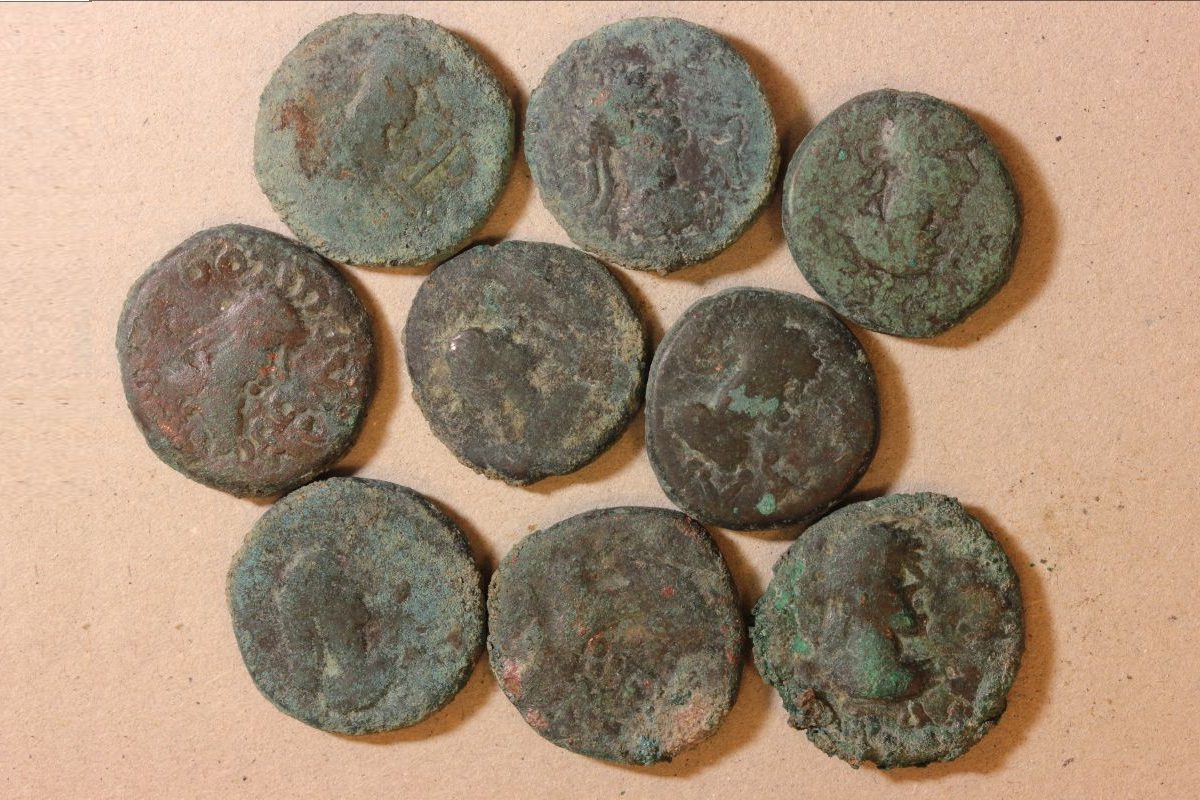1,500-Year-Old Industrial Agriculture Site Unearthed in Israel
The winepress, a unique gold medal and other artefacts related to a town in what is now the Tel Aviv neighbourhood of Ramat Ha- Sharon was found by archaeologists in Israel approximately 1500 years ago.
The enormous press paved with a mosaic floor is crucial evidence that during the Byzantine era the land had been used for agricultural and industrial operations, says i24 News. The foundations for a huge structure that may have acted as a storehouse or farmhouse were also founded by archaeologists of the Israeli Antiquities Agency (IAA).
“We uncovered several remnants of jars and cooking tanks within the structures and facilities, obviously used by farmworkers in the fields,” said excavator commander Yoel Arbel in his statement. “We have also recovered stone and millstones used for grinding wheat and barley as well as for crushing plants and herbs”
Arbel says that the majority of stone tools were manufactured from Basalt from 50 to 100 kilometres northwest of Ramat Ha-Sharon, near the Golan Heights and Galilee.
The currency was produced under the authority of Byzantine Emperor Heraclius in 638 or 639 C.E. according to Stuart Winer for the Times of Israel. The Emperor and his two sons are on one side.
The Golgotha Mountain in Jerusalem, regarded by the Christian Gospels as the place of Jesus’ crucifixion, appears on the opposite side. According to Robert Kool, a coin specialist with IAA, somebody carved an inscription, perhaps the name of the owner of the coin, on his surface in Greek and probably Arabic.
“The coin contains fascinating data on the decline of Byzantine rule in the country and on current and historical events, such as the invasion of the Persians and the emergence of Islam, and provides information about the Christian and pagan symbolism of the people living in it,” Kool says in the statement.
The finding on the site included the metal chain that might have been used to hang a candlestick – an object normally seen in churches, Rossella Tercatin writes for the Jerusalem Post.
Other objects dating back to the beginning of the Islamic era, which started in the 7th C.E. This comprised oil lights, a glass workshop and a storehouse for storing grains and producing huge containers.
“We not only used to work on the spot but also lived there at this time since we found the remnants of the homes and two big baking ovens,” Arbel adds in the statement.
The facility continued in use until the 11th century, according to archaeologists.
Before building a neighbourhood on the site, the crew performed excavations.
This is the first-ever archaeological site excavation and just a section was identified in the archaeological field survey,” says archaeologist Diego Barkan, IAA’s archaeologist in the district of Tel Aviv. “This is a great chance for the Israel Antiquities Authority to incorporate old relics into future city park planning.”
In a statement, Avi Gruber, Mayor of Ramat Ha-Sharon, said municipal officials are working with the developers of the new suburb to build the archaeological site.
“In ancient times and in the middle ages, I want all our people to appreciate learning about life,” he says.




